Somalis call Trump’s comments insulting their country a ‘grave mistake’
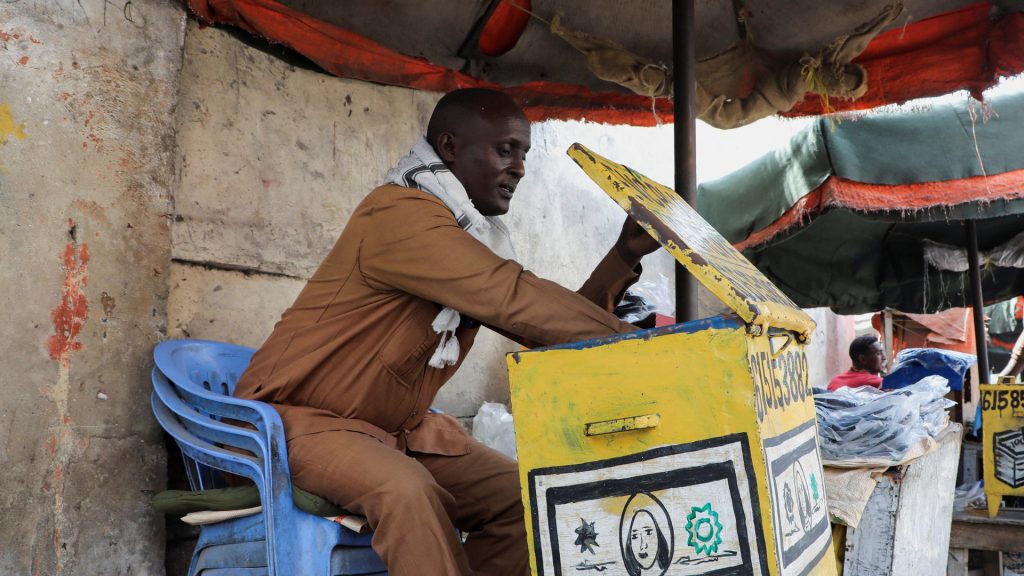
NewsFeed Somalis are condemning recent comments made by US President Donald Trump calling their country a place where people ‘just run around killing each other’. Published On 4 Dec 20254 Dec 2025 Click here to share on social media share2 Share facebooktwitterwhatsappcopylink Save Adblock test (Why?)
Tennessee special election results: What we know about Matt Van Epps’s win

Backed by United States President Donald Trump, Republican Matt Van Epps won Tuesday’s special US House election in Tennessee, defeating Democratic state Representative Aftyn Behn. Van Epps will fill the seat vacated by former Representative Mark Green, who resigned in July. Recommended Stories list of 1 itemend of list A Democratic upset would have further narrowed the Republicans’ 219-213 House majority. Here is what to know: What were the final results of the Tennessee special election? Van Epps won the election in Middle Tennessee. The Associated Press news agency called the race after Republican leaders made a late push to get their voters out. With about 96 percent of votes counted, Van Epps had 53.9 percent, while Behn had 45 percent, according to the AP. “This race was bigger than just one campaign,” Van Epps said in a statement. “It represented a defining moment for Tennessee and for the direction of the country.” He also said cost-of-living concerns would be among his top priorities – a reflection of the broader focus on those issues in races this year, including the New York City mayoral race and the governors’ races in Virginia and New Jersey. House of Representatives-elect Republican Matt Van Epps delivers his victory speech [Brett Carlsen/Getty Images via AFP] Tennessee’s 7th Congressional District is usually a safe seat for Republicans. Trump won it by 15 points in 2020 and expanded that margin to 22 points in 2024. But special elections can have surprises, and recent polls showed Behn trailing Van Epps by a few points. Advertisement Trump celebrated the result on Tuesday night through a post on Truth Social, congratulating Van Epps and calling it “another great night for the Republican Party”. Why was this special election held? Tennessee called the special election after Green, who first won the seat in 2018, resigned in July following his decision to retire. He had been a dominant force in the district, winning re-election in 2024 by 21 points. The seat he vacated sits in Tennessee’s 7th Congressional District, a large Middle Tennessee area stretching from the Kentucky border down to Alabama and including part of downtown Nashville. The district became more solidly Republican after the state’s Republican-controlled legislature redrew congressional boundaries in 2022. Before that redistricting, nearly all of Nashville was grouped into one reliably Democratic district. Lawmakers then split the city into three separate districts, including the seventh, and combined each slice of Nashville with heavily Republican suburban and rural counties. The new map diluted Nashville’s Democratic voting power by splitting the city’s strongly Democratic, urban voters – disproportionately younger, Black, other communities of colour, and more progressive – across several districts. Each part of the city was then combined with large suburban and rural areas that reliably vote Republican, made up of older, whiter, and more conservative voters. This redrawing scattered Nashville’s Democratic bloc across Republican-leaning districts, making seats like the 7th Congressional District far more likely to elect Republican candidates. But this time, saving the seat required an intervention by national Republican groups. Supporters of Democratic candidate Aftyn Behn watch results at an election night party for the special election of the US 7th Congressional District, December 2, 2025 [George Walker IV/AP Photo] What are some of the factors that contributed to Van Epps’s victory? Van Epps’s 8.9-point win marks a notable shift from previous Republican results in the district. Analysts say a key factor that helped shape the result was the heavy investment from national Republican groups, who viewed the race as closer than expected. “It is definitely going to concern the Republicans, so much so that there was a poll which showed that Behn could actually win,” Al Jazeera’s Patty Culhane said, reporting from Washington, DC. Trump’s personal Political Action Committee (PAC) spent more than $1m in the election, and US House Speaker Mike Johnson flew down to rally with the candidate, she said, adding that the president addressed a campaign rally via phone. Advertisement It is the first time the Trump-supporting super PAC has spent money on a campaign since last year’s election. In his victory speech, Van Epps aligned himself firmly with Trump, telling supporters that “running with Trump is how you win”. “We are grateful to the president for his unwavering support that charted this movement and catapulted us to victory,” he said. “President Trump was all-in with us. That made the difference. In Congress, I’ll be all-in with him.” THANK YOU, TENNESSEE 🇺🇸#TN07 #MattforTN pic.twitter.com/RJJiwOWi0H — Matt Van Epps for Congress (@MattForTN) December 3, 2025 He added that tackling rising living expenses would be one of his main goals – mirroring a theme that is emerging in many campaigns this year. Democrats recently won by wide margins in New Jersey, Virginia, and other key races, including the New York mayoral contest, and they hoped that a strong showing in Tennessee could further embolden the party ahead of next November’s midterm elections. “The momentum has been on our side,” Behn told local media on Tuesday evening. “We are overperforming in places where we need to be, and losing less in other places.” Democrat Aftyn Behn addresses supporters at a watch party after losing a special election, December 2, 2025 [George Walker IV/AP Photo] Who is Matt Van Epps, and what did he run on? According to his campaign website, Van Epps is a West Point graduate, a decorated helicopter pilot, and a lieutenant colonel who served in the Tennessee Army National Guard. His public service includes roles in Tennessee’s state government, where he worked as commissioner of the Department of General Services and as a deputy chief operating officer in the governor’s office. Van Epps describes himself as a strong fiscal conservative who backs the One Big Beautiful Bill Act, supports tax reductions, and favours changes to Medicaid. The bill passed in July extends tax cuts, slices welfare programmes and surges immigration funds as part of Trump’s agenda. He also favours a “secure border”. “Matt will work with President Trump to keep our borders
Amnesty calls for war crimes probe on RSF attack on Sudan refugee camp
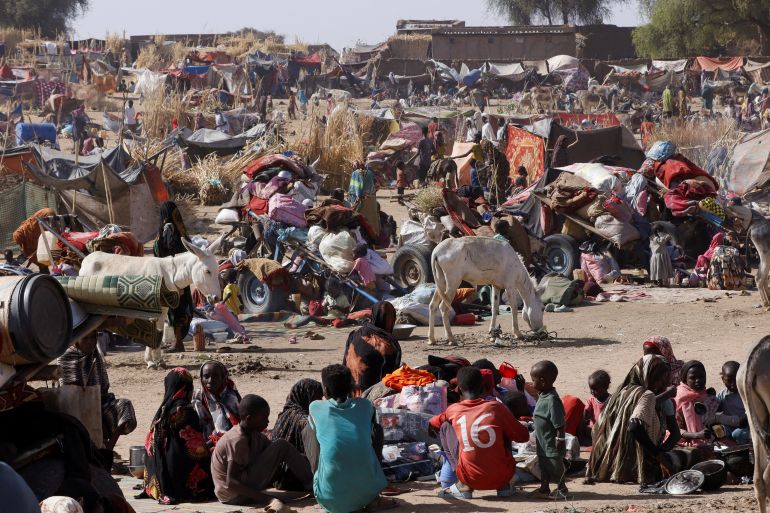
NGO documents accounts of atrocities during paramilitary force’s April assault on the North Darfur facility. Rights group Amnesty International has called for a war crimes investigation into an assault by the paramilitary Rapid Support Forces (RSF) on a displaced persons camp in Sudan’s North Darfur state earlier this year. A report issued by the NGO on Wednesday documents accounts of atrocities committed by the RSF during a large-scale attack on the Zamzam camp. The RSF has been accused of indiscriminate killing and mass rape, among other crimes, numerous times amid its conflict with the military government of Sudan that has been running since April 2023. Recommended Stories list of 4 itemsend of list The assault on the famine-hit camp came as the paramilitary force laid siege to el-Fasher, the state capital of North Darfur. The RSF now holds full control over the state and is pushing eastwards into the vast central Sudanese region of West Kordofan, adding to the millions of people who have been displaced. The attacks on Zamzam – the largest for internally displaced people in North Darfur state – between April 11 and 13 saw RSF fighters deploy explosives in populated areas and shoot randomly in residential areas, according to the report. People displaced following Rapid Support Forces (RSF) attacks on Zamzam displacement camp, shelter in the town of Tawila, close to el-Fasher in North Darfur, Sudan, on April 15, 2025 [Reuters] The document details dozens of accounts of deadly attacks on civilians, with witnesses recounting seeing RSF fighters fatally shoot at least 47 civilians who were hiding in their homes, fleeing the violence or sheltering in a mosque. Advertisement “The RSF’s horrific and deliberate assault on desperate, hungry civilians in Zamzam camp laid bare once again its alarming disregard for human life,” said Agnes Callamard, Amnesty International’s secretary-general. “Civilians were ruthlessly attacked, killed, robbed of items critical to their survival and livelihood, and left without recourse to justice.” The assault, which also saw RSF fighters deliberately set fire to homes and other buildings, and undertake acts “that may amount to” rape and pillage, caused an estimated 400,000 people to flee the camp during two days alone, the report said. ‘Shooting anywhere’ Based on interviews with 29 people – including witnesses, survivors, and the relatives of victims, as well as videos and satellite imagery – the report is the latest to accuse the RSF of committing atrocities in Sudan’s 30-month war, including mass killings, summary executions and rapes. The military government’s Sudanese Armed Forces (SAF) has also been accused of numerous war crimes. The kind of depictions given by survivors of the Zamzam assault, of RSF fighters shooting and setting fires indiscriminately to send residents fleeing, have become familiar. “[RSF] fighters were just shouting and shooting anywhere, so that is how many people were killed,” one man told Amnesty. Another said: “You could not identify where the shelling [was] coming from. It was everywhere.” One woman, a volunteer for a nongovernmental organisation, described an RSF fighter firing randomly from his vehicle as he drove near the camp’s main market. Amnesty said that shooting without a specific military target could constitute an indiscriminate attack, a serious violation of international humanitarian law. Another man described how he had witnessed about 15 armed men storm his compound and fatally shoot his 80-year-old brother and 30-year-old nephew. “No one is concerned with our situation,” he said. No end in sight Amnesty also once again criticised the United Arab Emirates (UAE) in the report for supporting the RSF – a widely made accusation. The UAE has staunchly denied that it supplies arms or financial support to the RSF. The SAF and RSF have remained locked in a brutal conflict that has killed tens of thousands of people and displaced nearly 12 million since hostilities broke out in April 2023. Efforts to broker a truce have made little headway. The RSF announced a unilateral ceasefire last month following a peace plan issued by the “Quad,” a group of mediators including Egypt, Saudi Arabia, the UAE, and the United States. Advertisement However, continuing clashes suggest there is little willingness on either side to end the war. Adblock test (Why?)
Cobalt Miners: The human cost of clean energy
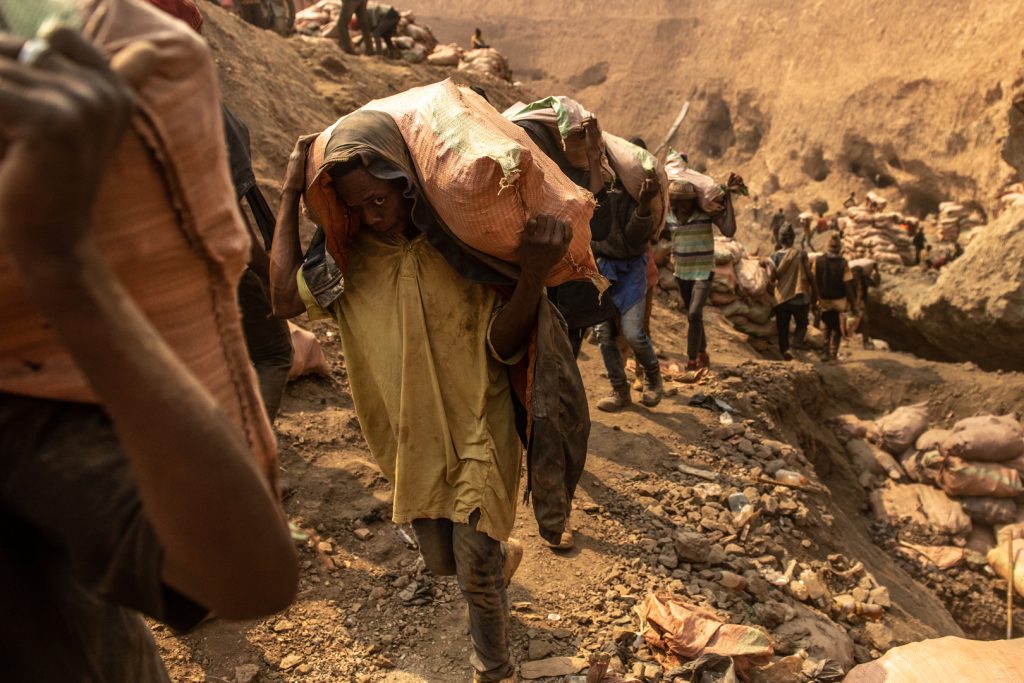
In DRC’s perilous mines, Eagle Mujinga walks a tightrope, protecting workers’ welfare to supply international demand for cobalt. Eagle Mujinga manages workers at Shabara cobalt mine in the Democratic Republic of the Congo (DRC). As the world’s biggest producer of cobalt, the DRC is a part of the chain that fuels electric vehicles and renewable energy worldwide. Miners in the DRC face dangerous working conditions and earn, on average, a few dollars per day to supply the multibillion-dollar industry. Eagle is caught in the middle when unrest grows among miners who accuse foreign buyers of underweighing and undervaluing the cobalt they extract. Once a miner himself, can Mujinga navigate demands from the miners while maintaining relations with foreign buyers? Cobalt Miners is a documentary film by Arthur Nazaryan, Neild Brandvold, Mike Shum and Qinling Li. Published On 3 Dec 20253 Dec 2025 Click here to share on social media share2 Share Adblock test (Why?)
Isack Hadjar to replace Yuki Tsunoda at Red Bull for 2026 F1 season

Red Bull Racing will pair another new driver with Max Verstappen after Isack Hadjar replaced Yuki Tsunoda for next year. Published On 2 Dec 20252 Dec 2025 Click here to share on social media share2 Share Isack Hadjar will replace Yuki Tsunoda as Max Verstappen’s Red Bull teammate next season, with Arvid Lindblad joining Liam Lawson at Racing Bulls, the Formula One (F1) teams announced on Tuesday. Frenchman Hadjar, 21, has made a big impression in his debut season with sister team Racing Bulls, including taking his first podium with third place in the Dutch Grand Prix at the end of August. Recommended Stories list of 4 itemsend of list British-born Lindblad, who also has Swedish nationality and Indian heritage through his mother, moves up from Formula Two to partner with Lawson and will be the sole rookie on the 2026 grid. Tsunoda’s departure leaves Formula One without a Japanese driver on the starting grid. Red Bull said he will remain in the team as a reserve. Hadjar is the third driver to fill the second Red Bull Racing seat in the past 12 months. Lawson was named as the replacement for Sergio Perez in December. The New Zealander was then replaced by Tsunoda in March after the opening two Grand Prix of 2025. Verstappen will compete for the fifth straight World Drivers’ title at the season-ending Abu Dhabi Grand Prix on Sunday. Max Verstappen, left, and Isack Hadjar will form the Red Bull Racing driver lineup for the 2026 Formula One season [File: Clive Rose/Getty Images] Adblock test (Why?)
Europe should seize Russia’s frozen assets now

The Trump administration is now determining what the future holds for Ukraine, and by extension for Europe, in matters of territorial integrity, sovereignty and security. Washington aims to make a deal to end the full-scale war Russia launched in February 2022 that Russian President Vladimir Putin has waged against Ukraine, even if it means abandoning longstanding international principles that prohibit the recognition of territory acquired through military occupation. For Europe more broadly, and the European Union in particular, however, there is far more at stake than those principles, which Washington has rarely prioritised in its own foreign policy. Deterring Putin from further aggression, and ensuring that Ukraine is stable both politically and economically, lies at the core of the bloc’s security and political concerns. A settlement to the conflict that fails to achieve either would risk the bloc’s own long-term security. Of course, all of this must be managed while ensuring that the Trump administration does not itself further endanger European security by once again casting doubt on its commitment to NATO’s security infrastructure. But Europe has already, if belatedly, begun to wake up to these concerns. By last year, 23 NATO members were spending the target 2 percent of GDP on defence, and the alliance agreed a new goal of raising core defence spending to at least 3.5 percent of GDP by 2035, with up to another 1.5 percent of GDP to be spent on critical infrastructure and on expanding their defence industrial bases. Advertisement More immediately, Europe has also surpassed the US for the first time since June 2022 in total military aid for Ukraine, with 72 billion euros ($83.6bn) allocated compared with Washington’s 65 billion euros ($75.5bn) by the end of April, according to the Ukraine Support Tracker. Yet, regardless of the outcome of the Trump administration’s efforts to push Ukraine towards a negotiating position that Putin might be willing to accept, the increased European support is not enough to offset the standstill in US funding. Military aid is also only one part of the picture: Kyiv is dependent on the West’s fiscal aid as well, to ensure the continued functioning of its government. And the bill for reconstruction only continues to grow as Russia’s assaults and aerial attacks continue. In February, the World Bank estimated it at $524bn (506 billion euros) —about 280 percent of Kyiv’s 2024 GDP. Without dramatic action, Europe risks being left to Trump’s whims as to its future security, despite having bowed to his demands not only on NATO spending and military support for Ukraine, but also on trade through agreements that have seen the US’s average tariff rate on imports from the EU and UK rise sharply. But there is a clear policy choice that Europe can make to ensure that financial support for Kyiv remains sufficient over the coming years and to shape the outcome of any settlement to the conflict, while simultaneously further deterring Putin. The European Union and the United Kingdom can move to confiscate the sovereign Russian funds frozen in their jurisdictions since 2022. Most importantly, they can seize the 185 billion euros ($214.8bn) frozen at the Belgium-based clearing house Euroclear – the majority of which is now in cash and can thus rapidly be deployed or reinvested – as well as the Russian government funds frozen at Euroclear’s Luxembourg-based rival, Clearstream, which are estimated to amount to around 20 billion euros ($23.2bn). Europe is not unaware of this possibility, and in fact, it has been debating doing so for months. The Euroclear assets have already been used to underpin an earlier $50bn (43 billion euros) loan to Ukraine finalised in January 2025, which is secured over earnings from those assets. Europe had been expected to advance a plan to create a new loan – one amounting to as much as 140 billion euros ($162.6bn) – secured over the assets at the European Council meeting on December 18-19, after delaying a final decision at the previous council meeting on October 23. The delay was largely due to obstinacy from the Belgian government, which has demanded indemnification from the rest of Europe while endorsing Kremlin talking points that such a move would be unprecedented. Advertisement Yet there is ample precedent. German and Japanese government assets were seized by the United States in the course of the second world war. In the latter case, Japan’s assets were even frozen before the attack on Pearl Harbour, the majority of which were later retained under the San Francisco Peace Treaty of 1951. The Kremlin’s threats to tie up Belgium in decades-long litigation are also overblown. They rely on a pre-Soviet-collapse bilateral investment treaty that Putin and his proxies have already failed to invoke successfully to unfreeze their assets or challenge previous sanctions. Additionally, there are dozens of unresolved claims worth tens of billions of dollars against Russia in European courts — including the roughly 13-billion-euro ($15bn) arbitration award won by energy firm Uniper against Gazprom for disruption to gas supplies in 2022. The largest and most significant case remains the 2014 award to former shareholders of Yukos, over the Kremlin’s expropriation of their company. That award survived all appeals: in October 2025, the Supreme Court of the Netherlands rejected Russia’s final challenge, confirming that the award — now valued at more than $65bn, including interest — is final and enforceable against Russian state assets worldwide. Enforcement, however, will still depend on locating suitable Russian assets that courts are willing and able to seize. The Kremlin will certainly engage in lawfare and litigation over these disputes, as it has repeatedly throughout Putin’s tenure. But it will lose, and when its national interests are at stake, it will pay. Russia has repeatedly complied with adverse rulings when vital access to Western markets or assets was at stake. The only clear-cut cases of either the West or Russia returning funds owed as a result of litigation arising from Russia’s war have been the settlements paid by Russian state insurer NSK and aviation firm
Juan Orlando Hernandez freed after Trump’s ‘full and complete’ pardon
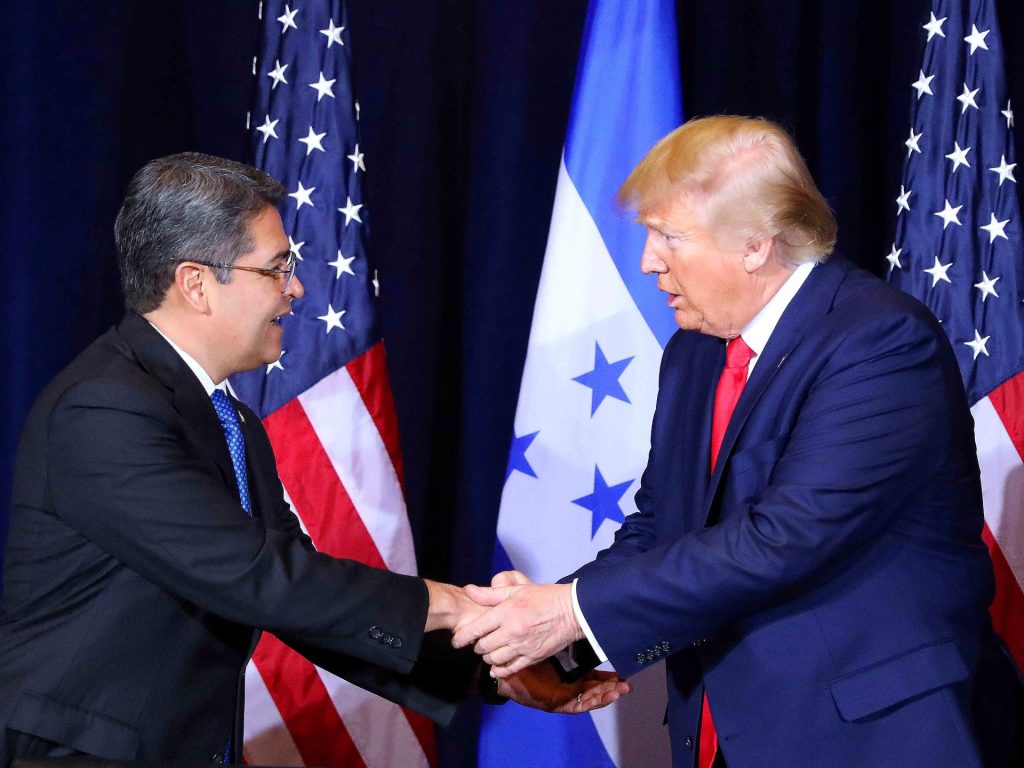
Hernandez, who was serving a 45-year sentence for drug conspiracy, received ‘full and unconditional pardon’, lawyer says. Authorities in the United States have released former Honduran President Juan Orlando Hernandez, who was serving a lengthy prison sentence for drug trafficking, after US President Donald Trump pardoned him. Hernandez’s lawyer, Renato Stabile, confirmed that the former Honduran president was freed on Tuesday, a day after being pardoned. Recommended Stories list of 3 itemsend of list “President Trump has issued a full and unconditional pardon, signed, Dec 1, 2025. President Hernandez was released from prison early this morning,” Stabile told Al Jazeera in an email. A federal prison database showed that Hernandez was released from a detention centre in West Virginia after spending more than three years in US jail. Last year, Hernandez was sentenced to 45 years for involvement in a scheme to export cocaine in the US, which prosecutors described as “one of the largest and most violent drug trafficking conspiracies in the world”. Trump announced plans to pardon the former Honduran president last week as he called for the people in the Central American country to back right-wing candidate Nasry “Tito” Asfura, a member of Hernandez’s party. “I will be granting a Full and Complete Pardon to Former President Juan Orlando Hernandez who has been, according to many people that I greatly respect, treated very harshly and unfairly,” Trump wrote in a social media post on Tuesday. “This cannot be allowed to happen, especially now, after Tito Asfura wins the Election, when Honduras will be on its way to Great Political and Financial Success.” Hernandez was convicted of accepting millions of dollars in bribes from violent drug-trafficking organisations over 18 years, which he used to fuel his rise in politics. Advertisement “During his political career, Hernandez abused his powerful positions and authority in Honduras to facilitate the importation of over 400 tons of cocaine into the US,” the US Justice Department said after he was sentenced last year. “Hernandez’s co-conspirators were armed with machine guns and destructive devices, including AK-47s, AR-15s, and grenade launchers, which they used to protect their massive cocaine loads as they transited across Honduras on their way to the United States, protect the money they made from the eventual sale of this cocaine, and guard their drug-trafficking territory from rivals.” During his trial, Hernandez denied taking bribes from drug dealers, arguing that he cracked down on the narcotics trade and citing his administration’s cooperation with the US military. Trump’s pardon of Hernandez comes at a time when his administration is carrying out deadly air strikes against boats in the Caribbean Sea and Atlantic Ocean that it says are carrying drugs – a campaign that critics say violates domestic and international law. Trump has also been issuing threats against Venezuelan President Nicolas Maduro after accusing him without evidence of leading a drug cartel that the US labelled as a “terrorist” group. Washington has also been ramping up its military presence in the Caribbean in what it calls an anti-drug trafficking operation, which raised speculations about a possible war to topple Maduro. Pardoning Hernandez has intensified criticism of the Trump administration’s approach to Latin America. “As President, Juan Orlando Hernandez personally helped the Sinaloa Cartel and El Chapo traffic deadly drugs into the United States. Drugs that killed Americans,” Democratic Senator Catherine Cortez Masto said in a social media post on Monday. “But instead of standing with law enforcement who brought Hernandez to justice, Trump is letting this criminal go free.” In Honduras, an election took place on Sunday, but the race is still too close to call, with sports journalist Salvador Nasralla leading against Asfura by only hundreds of votes. Trump – who continues to falsely claim that his 2020 election loss to former US President Joe Biden was due to widespread fraud – is already casting doubt over the outcome of the vote in Honduras. “Looks like Honduras is trying to change the results of their Presidential Election,” he wrote on his Truth Social platform on Monday. “If they do, there will be hell to pay!” Adblock test (Why?)
Pope Leo XIV prays for peace in Lebanon and the Levant
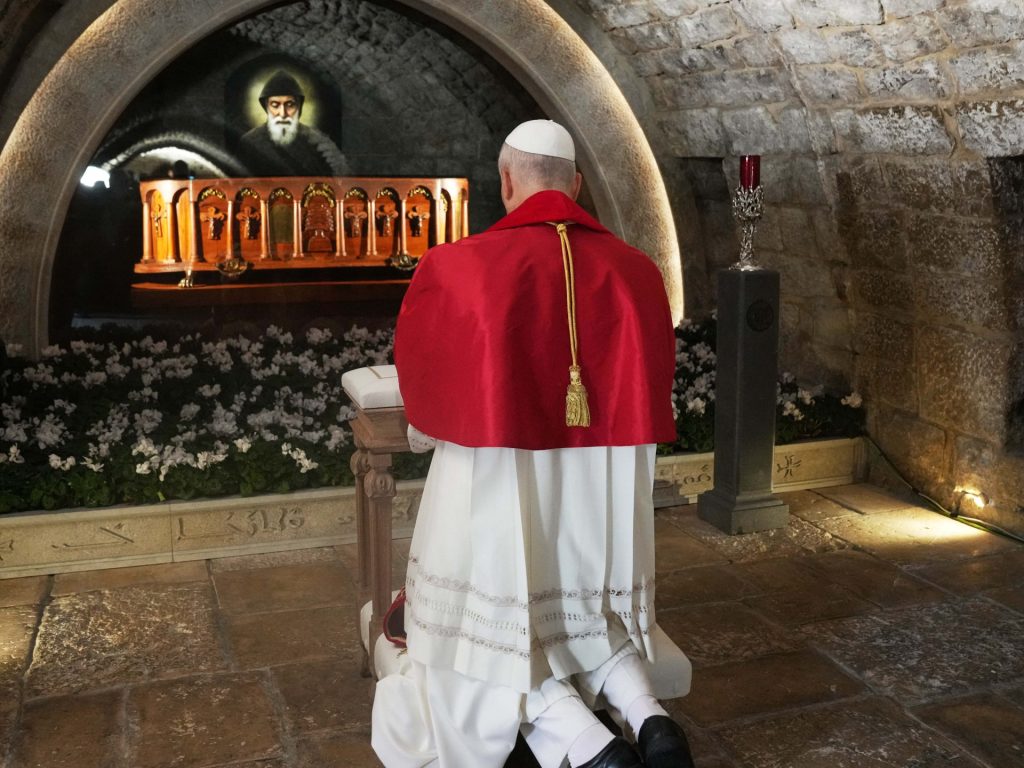
NewsFeed Pope Leo stopped at one of Lebanon’s most important Christian sites, praying that Saint Charbel helps to resolve differences and bring peace to the region. Published On 1 Dec 20251 Dec 2025 Click here to share on social media share2 Share facebooktwitterwhatsappcopylink Save Adblock test (Why?)
Ukraine seeks to shore up support in Brussels, Paris

Ukraine’s President Volodymyr Zelenskyy has met his French counterpart Emmanuel Macron in Paris to bolster support for Kyiv, as Ukrainian and European defence chiefs gathered in Brussels for talks centred around Ukrainian and collective security. The meetings came on Monday amid a diplomatic flurry of activity to end Russia’s almost four-year-old war in Ukraine. Recommended Stories list of 3 itemsend of list Before the meeting, Macron’s office said the two presidents would discuss the conditions necessary for a “fair and lasting peace”. Speaking to La Tribune Dimanche newspaper on Sunday, French Foreign Minister Jean-Noel Barrot said the meeting aimed “to move the negotiations forward”. “Peace is within reach, if [Russian President] Vladimir Putin abandons his delusional hope of reconstituting the Soviet empire by first subjugating Ukraine,” he noted. EU ministers Reporting from Brussels, where a meeting of the European Union’s defence ministers, also attended by Ukraine’s Defence Minister Denys Shmyhal, took place on Monday, Al Jazeera’s Hashem Alhelbarra said Kyiv’s European allies wanted to see “an agreement where there’s no notion of part of Ukraine being handed over to Russia as the price they have to pay for a permanent deal”. Alhelbarra added that the bloc is worried about the possibility of a “blanket amnesty”, which would prevent Russian officials from being tried over crimes committed in Ukraine. Meanwhile, Zelenskyy said on social media that he had briefed Finland’s President Alexander Stubb on “the signals we have received from the American side”, following a day of talks on Sunday between Ukrainian and American negotiators in Florida. Advertisement The Ukrainian leader also confirmed that he had spoken to European Commission President Ursula von der Leyen and NATO boss Mark Rutte, saying “these are important days, and much can change”. Zelenskyy has described talks in the United States on Sunday between US and Ukrainian negotiators as “very constructive”, but noted that there were “some tough issues that still have to be worked through”. For Kyiv, it marks progress from US President Donald Trump’s original 28-point peace proposal, which it and its European allies viewed as favourable to Russia. On Sunday, the US president declared on Air Force One that “there’s a good chance we can make a deal”. However, he also said Ukraine has “some difficult little problems”. Two days earlier, Andriy Yermak, Zelenskyy’s chief of staff and Ukraine’s top negotiator, resigned amid a corruption scandal in the energy sector. More work needed Marco Rubio, the US secretary of state, hailed the Florida talks as a success, but added that “there’s more work to be done”. “There are a lot of moving parts, and obviously there’s another party involved here that will have to be a part of the equation, and that will continue later this week when Mr Witkoff travels to Moscow,” he said. Reporting from Kyiv, Al Jazeera’s Rory Challands said the Ukrainians would be happy that Rubio, whom they see as the Trump administration’s most Ukraine-friendly senior official, was currently leading the negotiations. “Because Rubio seems to be driving the car at the moment, things seem to be going OK for the Ukrainians,” Challands said. However, he stressed that caution was needed because of Trump’s unpredictability and because Russia had yet to react to the latest peace plan draft. Sticking to his maximalist demands, Putin has said he will end the war only when Ukrainian troops withdraw from four of its regions Russia illegally annexed in 2022 but does not fully control. “If they don’t withdraw, we’ll achieve this by force. That’s all,” the Russian president said last week. US envoy Steve Witkoff and Jared Kushner, Trump’s son-in-law, will discuss the latest draft peace agreement with Putin when they meet in the Russian capital on Tuesday afternoon. Russians are generally not enthusiastic about their visit, Al Jazeera’s Yulia Shapovalova said, reporting from Moscow. “On the one hand, polls show that most Russians really want an end to the conflict as soon as possible,” Shapovalova said. “On the other, there’s not much enthusiasm about Steve Witkoff’s visit,” she added. Advertisement Over on the battlefield in Ukraine, Russia’s Ministry of Defence said on Monday that its troops had seized the settlement of Klynove in Ukraine’s Donetsk region. The announcement could not be independently confirmed. Deadly attack on Dnipro Elsewhere, at least four people were killed and 40 others injured, 11 critically, in a Russian missile attack on the Ukrainian city of Dnipro on Monday, according to Vladyslav Gaivanenko, the acting governor of Dnipropetrovsk region. The strike damaged four residential high-rises and an educational facility in the city centre, Dnipro’s Mayor Borys Filatov said. He also reported that search and rescue operations were ongoing. Russia launched 89 strike and decoy drones overnight on Sunday before the Dnipro attack, with 63 of those shot down or jammed, Ukraine said. The Russian Defence Ministry said it had downed 32 Ukrainian drones overnight across 11 of the country’s regions as well as the Sea of Azov. Adblock test (Why?)
Indonesia races to find missing after massive floods, landslides

NewsFeed More than 1,000 people have died in floods and landslides across Indonesia, Sri Lanka, Thailand and Malaysia after days of tropical storms. In North Sumatra, President Prabowo faces mounting pressure to declare a national emergency as aid teams struggle to reach cut-off villages. Published On 1 Dec 20251 Dec 2025 Click here to share on social media share2 Share Adblock test (Why?)

